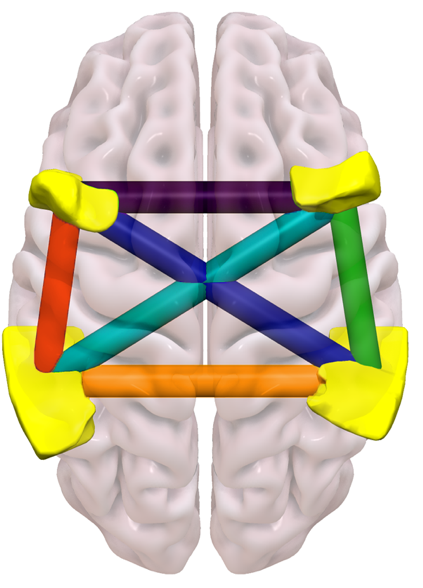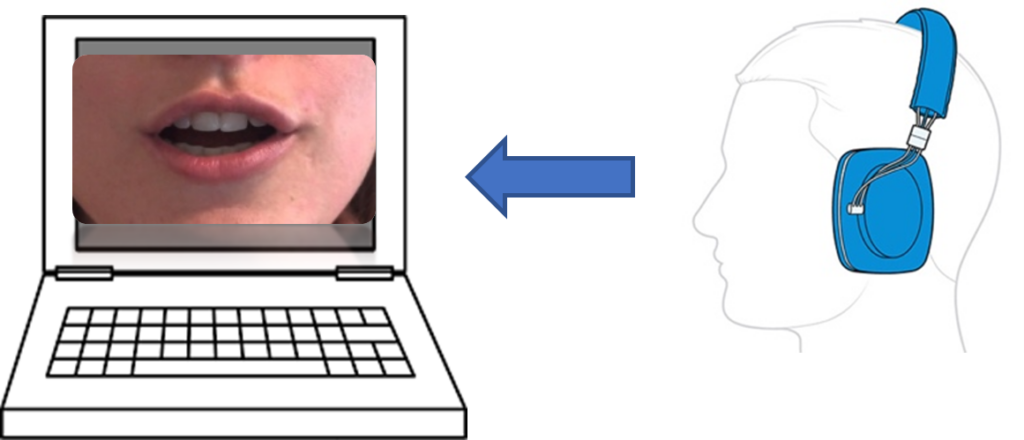Background
At C-STAR, not only are we aiming to identify treatment approaches that can improve language deficits in persons with chronic aphasia, but we also investigate what it is about certain treatment approaches that lead to treatment gains. Aphasia can be caused by damage to areas of the brain that are critical for speech production, speech comprehension, or a combination of the two (see Figure 1 for these areas in yellow, and their connections). These critical areas work together in a “network” to accomplish tasks like having a conversation, reading a book, telling a story about your day, etc. Networks of brain regions typically have high functional connectivity. This means that when one area is working, another area is working in a similar way, showing a degree of synergy across regions.
Figure 1:
Some of our participants may be familiar with research studies that have incorporated Speech Entrainment (Fridriksson et al 2012; 2015; Bonilha et al., 2019; Thors et al., 2019). During Speech Entrainment, participants are presented with an audio-visual model of a person talking and are asked to watch/listen, and mimic the model in real time, as shown in Figure 2 below. To further illustrate this, I’ll refer you to a TedxTalk by Dr. Fridriksson, who presented his work showing the impact of speaking with an audio-visual aid compared to natural, spontaneous speech. You can watch the talk here: https://youtu.be/Cy6S7aMmUYo.
Figure 2:
Summary of Results
In our most recent Speech Entrainment manuscript (Johnson et al., 2021), we aimed to investigate functional connectivity during Speech Entrainment (speaking with a model) compared to natural, spontaneous speech (speaking without a model). Results from this paper show that not only does Speech Entrainment improve speech fluency in persons with non-fluent aphasia (Fridriksson et al., 2012), but it also increases functional connectivity during critical language regions (particularly left posterior-left anterior; and left posterior-right anterior), resulting in connectivity between those regions that is more similar that of individuals without aphasia.
Future Directions
Graduate student Lynsey Keator recently completed her proof-of-concept study investigating transcranial alternating current stimulation (tACS) during Speech Entrainment. This stimulation technique capitalizes on the network approach of language organization in the brain and effectively manipulates the degree of functional connectivity between two regions. This project aimed to determine if, with the addition of tACS, speech output during Speech Entrainment would be more improved compared to without stimulation. We look forward to reading about her results in the coming months!